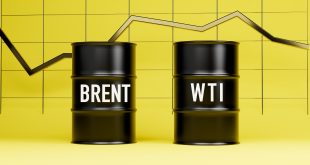The S&P 500 declined by around 0.3%, while the Dow Jones Industrial Average inched up 0.09%. The tech-heavy Nasdaq 100 dropped 0.59%.
U.S. equity indices gave up early-session gains in the week’s final trading day, pressured by weakness in semiconductor stocks. The pullback came after The Wall Street Journal reported that a senior U.S. official had informed major global chipmakers that Washington may revoke exemptions granted to allies operating semiconductor plants in China.
Stocks initially rose on signs of easing tensions in the Middle East, which also led to a pullback in WTI crude prices. The gains faded after Reuters reported that the Iranian government expressed willingness to discuss limits on uranium enrichment.
Friday’s price action was also marked by heightened volatility, driven by the expiry of options, futures, and other derivatives contracts with a notional value of approximately $6.5 trillion.
Equities drew additional support from dovish remarks by Fed Governor Christopher Waller, who said, “I think we have room to bring interest rates down as early as July, and then we can kind of see what happens with inflation.”
Still, markets remained weighed down by lingering concerns from Wednesday, when Fed Chair Jerome Powell warned that tariff-driven economic uncertainty and inflation risks continue to cloud the path for monetary easing. The FOMC also downgraded its U.S. GDP forecast and raised inflation expectations for this year.
Meanwhile, hostilities between Israel and Iran entered their eighth day Friday, as Israel launched new strikes targeting Iranian missile and nuclear facilities, warning it could dismantle Iran’s leadership.
In response, Iran ruled out negotiations with the U.S. as long as Israeli attacks persist. President Pezeshkian stated that the “only way to end this imposed war is to halt the aggression unconditionally.” Iran reiterated its defiance and vowed a forceful response if the U.S. directly joins Israeli military operations.
Dollar Logs Weekly Gains
By week’s end, the U.S. dollar posted notable gains, underpinned by a mix of market sentiment, monetary policy outlook, and trade-related tensions.
The dollar index, which tracks the greenback’s performance against a basket of six major currencies, climbed to 98.67, up from the previous week’s close of 98.32. It dipped to a weekly low of 97.82 and peaked at 99.10 during the same period.
The ongoing Israel-Iran conflict was a key driver of dollar strength, with escalating hostilities bolstering demand for safe-haven assets.
Fed’s Position
The U.S. currency also benefited after Fed Chair Jerome Powell signaled the central bank is in no rush to adjust interest rates, preferring to wait for more clarity.
“We’ll make smarter decisions if we wait a few months or until the time is right,” Powell said during the press conference following the Fed’s latest decision. “The economy is performing strongly, which may allow the Fed to hold rates steady for now while assessing developments.”
Trade War Tensions Resurface
Canadian Prime Minister Mark Carney announced that Ottawa will impose retaliatory tariffs in response to U.S. steel and aluminum duties, aiming to use this pressure as leverage in ongoing trade talks with Washington.
Carney said Canada would revise the countermeasures effective July 21, depending on the progress in negotiations. Only producers from Canada and its trading partners exempt from tariffs would be eligible to compete for government procurement contracts. Canada also plans to introduce additional tariffs to address global overcapacity and unfair steel and aluminum trade practices.
Although trade tensions have historically weighed on the dollar, markets appeared to interpret Canada’s move more as a negotiation tactic than a genuine escalation—helping to limit the greenback’s downside.
Weekly Losses for Gold
Despite geopolitical strife and military escalations in the Middle East, the dollar’s strength proved overwhelming, capping gold’s appeal as a haven. The precious metal logged weekly losses, pressured by a surging greenback and hawkish Fed signals.
Gold futures dropped to $3,370 per ounce on Friday, down from the prior close of $3,435. The metal touched a weekly high of $3,452 and a low of $3,362 during the same stretch, reflecting investor caution amid turbulent macro dynamics.
Oil Reaps the Rewards of Middle East Tensions
Crude oil ended last week on a high note, climbing roughly 1.5% as geopolitical tensions engulf the Middle East, particularly amid ongoing hostilities between Iran and Israel.
U.S. crude futures rose to $73.96 per barrel for the week ending June 22, up from the previous session’s close of $72.91. Over the course of the week, prices dipped as low as $67.88 and reached a high of $75.70.
The volatility stems from fears that ongoing conflict in the region—especially involving key Gulf exporters—could disrupt vital shipping lanes and strain global oil supply.
The fighting, now in its eighth day, erupted last weekend after Israel launched airstrikes on Iranian territory, claiming to target nuclear sites. Since then, Iran has returned fire, with no signs of de-escalation.
Despite the uncertainty surrounding how events will unfold, past precedent offers some comfort: over the last 15 years, similar flare-ups haven’t triggered long-lasting oil price surges or major market disruptions. Structural shifts in the U.S. economy are also playing a role—America has been a net oil exporter for several years, and energy spending has decreased as a share of GDP thanks to improved efficiency and a services-driven economy.
Weekly Losses for the Japanese Yen
The U.S. dollar’s strength was a significant factor behind the yen’s weakness over the past week, compounded by Japan’s monetary policy stance.
By week’s end, the greenback logged strong gains, fueled by supportive market sentiment, monetary policy dynamics, and renewed trade tensions.
Bank of Japan Governor Kazuo Ueda noted that interest rate hikes could be on the table if economic forecasts point to rising inflation. But by the week’s close, the BoJ left rates unchanged and continued tapering its crisis-era purchases of Japanese government bonds—a form of quantitative easing—placing additional pressure on the yen.
The USD/JPY pair climbed to 146.06 from last week’s close at 144.05, having touched a weekly low of 143.64 and a high of 146.21.
Sterling Slips Despite Steady Rates
The Bank of England held interest rates steady at 4.25% in its June meeting, warning of recent contraction in Britain’s economic growth.
The central bank flagged the potential for ongoing wage stagnation and voiced concerns over persistent uncertainty driven by the Middle East conflict.
Having shrunk 0.3% in April, the UK economy faces mounting downside risks, according to the bank. The Monetary Policy Committee also noted the possibility that wage growth may continue to weaken, which could influence consumer prices—particularly in the U.S.
While the BoE kept rates unchanged by a 6–3 vote, markets now expect rate cuts in August and again in November.
Sterling fell on the week, dragged lower by a surging U.S. dollar and heightened geopolitical risk following Washington’s involvement in strikes on what it claims are Iranian nuclear facilities. The GBP/USD dipped to 1.3430, with an intraday low of 1.3382 and high of 1.3449.
When Will Safe-Haven Assets Peak?
Despite the market pessimism sparked by Middle East tensions—especially the resulting rallies in oil, gold, and the U.S. dollar—history points to the eventual normalization of these trends.
Markets are expected to begin absorbing the shock soon, even with the U.S. now actively participating in Israeli-led strikes on Iran—a scenario that could generate sharp, short-term spikes in some assets.
Safe-havens like gold and the dollar often benefit during the initial stages of geopolitical flare-ups, but tend to retreat over the medium and long term as anxiety subsides or investors adjust to prolonged uncertainty.
The dollar’s dominance over gold may diminish in the coming week, especially if Middle East tensions escalate following Sunday night’s U.S. airstrikes on alleged Iranian nuclear targets.
Meanwhile, the Swiss franc may see gains, whereas the yen could face continued pressure due to the BoJ’s reluctance to raise interest rates.
President Donald Trump confirmed that U.S. forces carried out “highly successful” strikes on three Iranian nuclear sites, including the Fordow underground enrichment facility. His announcement came just days after stating he would decide within two weeks whether to join Israel’s military action.
U.S. Defense Secretary Pete Hegseth hailed the strikes as “overwhelmingly successful,” noting they required months of preparation and coordination.
Looking Ahead
The coming week is packed with high-stakes events that could shape global markets.
Chief among them is the U.S. joining Israel in its military campaign against Iran—an action likely to dominate headlines. In addition, markets will be tuned into Federal Reserve Chair Jerome Powell’s testimony on Tuesday and Wednesday, as investors search for any hint about the Fed’s next move.
Key data releases will include U.S. consumer confidence, housing figures, and the Fed’s preferred inflation metrics.
On the corporate front, Tesla will make waves with the launch of its “Robotaxi” self-driving ride service in Austin—a move that has sparked controversy, particularly after U.S. lawmakers called for a delay until autonomous vehicle regulations are finalized.
 Noor Trends News, Technical Analysis, Educational Tools and Recommendations
Noor Trends News, Technical Analysis, Educational Tools and Recommendations





